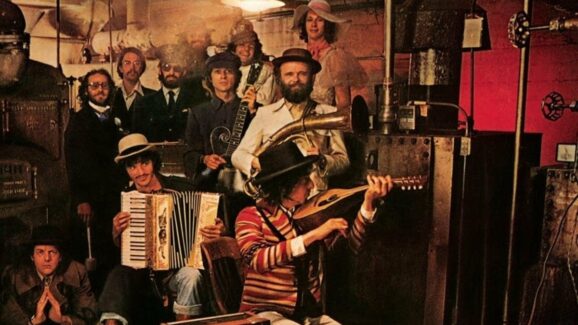Approaching the half-century anniversary of Steely Dan’s Aja (released 9/23/77) it’s confounding to try and figure out why it became the group’s most commercially successful album. After all, a fair-sized hit, “Do It Again,” emerged five years prior to their debut, Can’t Buy A Thrill, while “Rikki Don’t Lose That Number,” the opening track of their third LP Pretzel Logic, was the most successful single of the group’s career (in the summer of 1974 peaking at number 4 on the Billboard Hot 100 when that was the prevailing measurement of mainstream popularity).
Perhaps the source of the mystery of recognition for Aja, including its multiple Grammy nominations, lies with the LPs released in the interim. Like the aforementioned two records, Countdown to Ecstasy, Katy Lied and The Royal Scam was issued to greater or lesser accolades, yet the five records total do not constitute a consistent string of growing acclamation from both critics and the public. Consequently, there was really no cumulative effect of acknowledgment to bloom with the release of Aja.
Forgetting for the moment that, in 2010 the Library of Congress selected the album for preservation in the National Recording Registry, for being “culturally, historically, or artistically significant,’ not everybody liked/likes Aja at the time it came out. But passing negativity aside, as well as future assignation of the album to the superficially misanthropic category of ‘yacht rock,” The Dan’s sixth studio album is inarguably an iconic piece of work.
There was/is just enough of what had become known as the Steely Dan sound on Aja to please more mainstream listeners than not, including those only superficially acquainted with their music. Over the course of the alternately catchy, immersive seven tracks such as “Black Cow, ” lyrics equal parts cryptic and thought-provoking abound as often as stylish licks from the forty-some session men that contributed to the recording sessions. (At the same time, while it’s not that readily apparent, it would almost seem like Donal Fagen sings in his most nasal tones to camouflage his vocal debt to self-professed influence Bob Dylan).
There may be no slower clavinet playing ever than Crusader Joe Sample’s, while the tantalizing minimal horn parts whet the appetite for more. While there’s certainly less sense of musicians actually playing together than on any of the previous Steely Dan albums, there is at least a recurring facade of improvisation throughout this one. Most notable among those appears on the title song, which features a solo by none other than Wayne Shorter, he of Miles Davis’ second great quintet as well as co-founder and charter member of the jazz-fusion icon band Weather Report.
If the co-founders and leaders of Steely Dan, Fagen, and songwriting partner/ multi-instrumentalist Walter Becker, ever wrote anything autobiographical, it’s indeed hard to tell from the icy irony they employ in so many of their collaborative compositions. But then “Deacon Blues” is a marked exception, the ideal combination of narrative and musicianship, a cinematic account of the struggling jazz saxman longing for fame and convinced he’ll only receive his due posthumously. (Whether he’s a figure deserving of empathy or derision is a mark of the complexity in the compositional skills of the authors.)
Paradoxically (or perhaps not), Aja is as ideal for background music as close listening. And whether listeners know the album by heart or not, the music of “Home At Last” never intrudes but insinuates and does so in such a way the effect is almost insidious; with its hooks cropping up in the most unexpected places, it will invariably imbue its audience with a sense of tranquility almost narcotic in its depth (as befits rumors about the circumstances under which the recording took place).
The catchy likes of The Dan’s earlier hits thus sound perfectly conventional, almost trite in comparison. The faintly syncopated rhythms of the musicians on ”I Got The News” narrowly but deftly sidestep the forced funk which was the bane of jazz-rock fusion in its heyday. Of course, like all the various and sundry other components of the album, all the various sonic facets reside within enticing audio quality so polished it gleams, a virtue in and of itself, and not just the source of audiophile devotion to this title.
Not surprisingly, even if you haven’t heard this forty-one-plus minutes for some time, the addictive impact Aja is much the same after forty-five years. The LP stands outside of time in relation to the rest of the Steely Dan discography and even the times in which it appeared: the latter aspect is somewhat surprising given how it seems to summarize the cosmetic superficiality of the Seventies era, but the paradox is apropos the attitude of the (jaded?) duo at the head and heart of the project.
Perhaps that’s just its uniquely oblique redefinition of ‘timeless’ music though. Still, Fagen and Becker would probably prefer to have it remembered in just such a jaundiced manner, and, given the fact the current touring configuration of the group plays the entirety of the LP live–minus Becker, who passed in 2017–that’s a theory more than plausible and suitably cynical to the subject(s) at hand.












